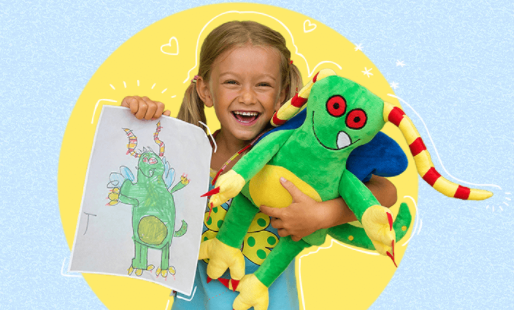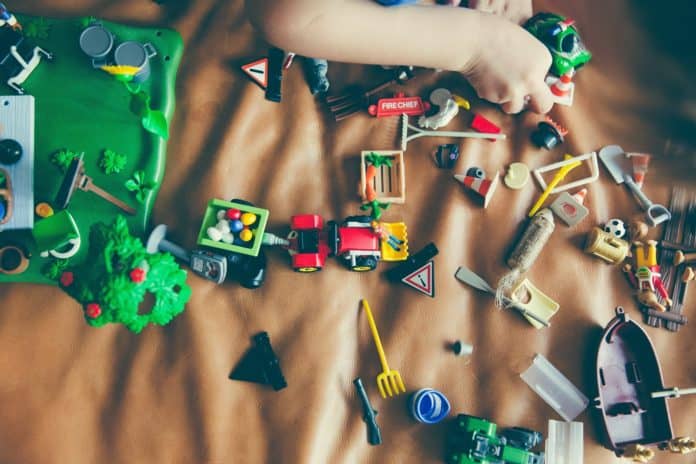Parents want what’s best for their children. From developing their child’s knowledge to nurturing their personalities, giving children the opportunity to advance their mind is a must. Before babies develop the ability to speak and comprehend verbal communication, their life is explored through sensory experiences. But when they do start to develop speech, sensory development can sometimes take a step back, resulting in a potential lack in much needed sensory engagement.
Increased ease of accessibility to digital technology can be a convenient means of keeping children both engaged and occupied at home and in the classroom. But should improvements in child oriented technology overtake sensory experiences needed for a child’s psychological development? With 6 year olds understanding technology better than their parents, shouldn’t this be a potential raise for concern over the potential lack of sensory activity children receive within a growingly digital era?
Improvements in technology shouldn’t come at the cost of reducing much needed sensory experiences. Within this article, we will explore attainable ways to re-engage sensory experiences within a child’s everyday routine, prospecting for a great sensory re-initiation in young children.
Why Children Need Sensory Engagement
From day one, babies learn to understand their world hands and eyes. When babies develop upon these experiences, their understanding and awareness of the world becomes more complex. At the toddler stage, they will be taking their first steps and expressing their first words. Up until then, their means of communication has been physical. But once toddlers start to express their first words, sensory development can sometimes take a step back.
Parents can (understandably) be eager to quickly develop their child’s speech and vocabulary. As young children learn with all their senses, deprivation of sensory child development can have negative effects on a child’s ability to learn. Therefore, it’s vital to be addressing all sensory factors associated with a child’s physical and psychological development.
Advancements and accessibility to child friendly products such as ipads, mobile phones, and laptops might be changing the way children engage with physical activity. Even if screen based media is a successful means of communicating information to kids, technology could still be having a negative impact on a child‘s development.
Re-engaging Physicality
With the growing involvement of digitalisation concerning a child’s world, approaching sensory development within a child’s routine is key. But the problem is that all children are different and may appreciate different approaches to introducing sensory engagement, resulting in the introduction of sensory engagement can differ across children.
Below, three optimizable environments which highly concern children and their sensory development have been outlined.
In the Classroom
With children in primary education spending on average 779 hours a year in school, the classroom is the perfect place to be enhancing child sensory development. Optimization of the learning environment can be a healthy way of both maintaining a child’s sensory development alongside their educational journey. Patrick Tonks, creative director of Great Bean Bags says “being ESPO’s main supplier of bean bag goods, we have seen progressive demand for school bean bags. Such demand could well be due to the decreasing sensory activity kids are exposed to in the digital age”.
Create a sensory reading zone
Reading doesn’t have to solely be visual. Creating a relaxing zone for children to be comfortable in through both sound and touch can create the perfect learning environment for children to evolve their literacy and vocabulary skills.
Introducing a bean bag reading zone with subtle music can introduce both touch and hearing to the reading process. Such an environment can improve a child’s iconic memory, which is the memory we associate with both visual and physical stimuli.
Interactive arts and crafts
A lot of the time, art based subjects usually consist of children expressing their imagination onto a piece of paper. But why not introduce the idea of creating more purpose out of children producing drawings?

Budsies do exactly this. Creating sensory longevity out of an everyday classroom activity (such as drawing) can really get a child’s creative juices flowing. The Budsie cuddly toy concept gives children the opportunity to really think about their creations, as the final result will determine the toys physical form. Not only will this fuel creativity, but sensory engagement will be involved within the process of the activity.
At Home

If children are not getting the opportunity to embrace sensory development at school, then it’s important to induce this at home. There are many ways in which we can change a child’s home environment in order to include an amplification in sensory experiences.
Introduce a musical instrument
Learning to play an instrument from a young age is something many adults wish they had done. Getting children to take on an instrument will tick the sensory box as well as giving them the opportunity to discover the world of music and the opportunities it has to offer.
Get a household pet
Household pets can be a great means of improving both a child’s confidence and relationship with animals. Caring for pets by nature requires a great amount of sensory interaction, making pet ownership a perfect means of installing natural sensory engagement.
Outdoors
Getting kids to explore the outdoors should be a must. There are so many new elements, textures, and smells to be explored outside of the home or classroom. Taking an outdoors approach to sensory nurture will be a great way of installing the connection a child has with the outdoors from a young age.
Start an outdoor sport
Getting kids into a local sports team can be great for physical and social development. Giving children the opportunity to play in team games with other children will improve social relationships outside of the classroom, as well as improve on their much needed physical exercise.
Going on walks
Taking children on daytrip walks can be an exciting way to install a child’s connection with the nature and the outdoors. Making this a routine activity will slowly become the norm of a child’s weekly routine. As a result, this can install a level of desire to have to get outdoors, giving a child the drive to further independently take on outdoor hobbies or activities in later life.



